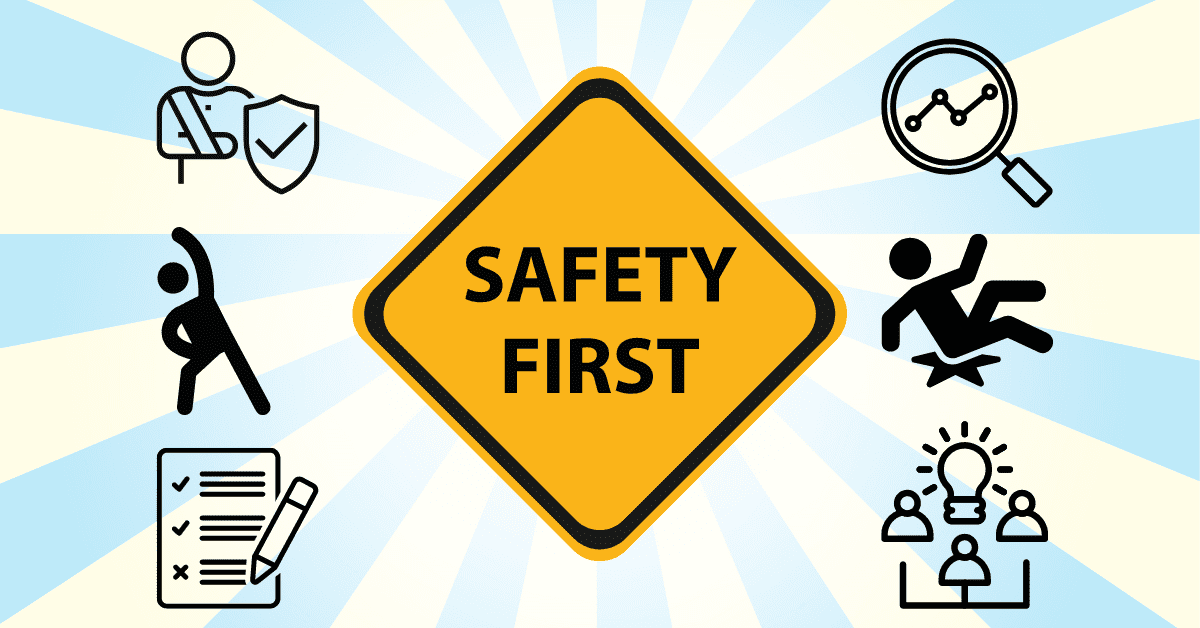
Putting safety first in your lawn and landscape company has numerous benefits. Not only are your team members able to return home safely each day, but reducing accidents and injuries also lowers overhead costs like downtime, workers’ comp and insurance premiums.
You may not be able to prevent incidents from happening entirely, but taking a multi-level approach to safety can scale down their severity and frequency.
Conduct Regular Safety Training
The most obvious area to work on is having regular safety training. Rather than going over safety once with employees when they’re hired, discussing safety topics frequently helps keep it top of mind.
Regular safety meetings also encourage open communication between crew members and managers. You can use these meetings to highlight any safety concerns that are happening in your company such as not wearing the necessary PPE.
Other concerted safety training efforts like a spring equipment rodeo or annual training day can focus on best safety practices and be beneficial for both newer hires and veteran employees.
Make sure the topics you select for these safety meetings are relevant to the work you have going on and the season you’re in. You can access a number of different safety topic resources here.
Start Mornings with Stretching
Another simple step to mitigate injuries in your team is to conduct a daily morning stretch program. Work-related musculoskeletal disorders (WMSDs) account for more than 30 percent of all nonfatal occupational injury and illness cases each year.
BellaVista Landscape Services, Inc., based in San Jose, California, added a morning stretching routine and this warmup provides BellaVista president Brian Moore the chance to learn more about his team members’ daily lives. He says it also helps them spot anyone who might be nursing an injury that wasn’t reported the day before.
“We’ve changed it up again to a really short warmup that warms up your core muscles, gets the blood flowing, and it brings everybody to a circle in the morning,” Moore says. “We can have a quick safety chat; we can all see each other eye to eye.”
Carry Out Job Hazard Analyses
Identifying and assessing job site hazards before starting a job is another method to help reduce the likelihood of workplace accidents.
Once you have determined the risks of a site, then you can go about applying control methods to eliminate the hazards. If this is not possible, look for ways to prevent access to the hazard. Document your job hazard analyses and share these with the crews.
Regularly check that the team is following these control methods and if any control methods should be changed.
Learn from Close Calls
Your staff should also report and analyze any close calls that occur during operations. Having a record of your close calls can highlight similar incidents and a need for targeted training.
According to the National Safety Council, 75 percent of accidents are preceded by one or more close calls. Some common close call incidents include flying debris, operating commercial mowers on steep or slippery surfaces or falls from work vehicles and trailers.
Encourage your employees to record close calls even if nothing was damaged and no one was hurt.
“Reduce the feeling among crew members that a close call is a reflection on their unsafe workplace behavior,” says Sam Steel, NALP’s safety advisor. “If the firm creates a non-threatening environment that reporting close calls is a good thing and will not result in disciplinary action, it will most likely result in a reduction of close calls becoming injury incidents. Companies that have a written policy and system for reporting close calls have a typically more friendly and positive employee-management relationship.”
Report Accidents Quickly
When accidents do occur at your company, reporting them in a timely manner will allow you to get your employees the care they need and prevent loss of critical information for the claim.
“The sooner a claim is reported to the carrier, the sooner we can take action and conduct a timely investigation into the claim and collect information to determine the appropriate benefits due to the injured worker,” says Drew Garcia, vice president of Rancho Mesa Insurance Services. “A delay in reporting can delay the provision of benefits and may result in litigation – which directly impacts the costs of the claim.”
No matter the severity of the injury, make sure your employees know they need to report incidents as soon as possible. Studies have shown that work-related injuries reported within the first five days have a dramatically lower average claim cost and litigation rates than those reported after five days.
Develop a Strong Return to Work Program
Also, after an accident, having a strong return to work program can help reduce workers’ compensation costs. Allowing an injured employee to remain at work in a temporary or light-duty capacity can boost their mental health as they are able to do meaningful work while recovering from their injury.
“Studies have shown that the longer somebody is out of work, the less likely they are to ever come back to work at all,” says Margaret Hartmann, senior vice president and chief marketing officer for Berkshire Hathaway Homestate Companies. “Permanent disability claims are often litigated and more costly so it is important for employers to get injured workers back into the workplace and on the road to recovery as quickly as possible.”
Make sure the light-duty tasks are impactful as those seen as punitive can be detrimental to morale. It is important for one person to monitor the progress of workers on modified duty and to evaluate their current restrictions. This person should interact with the injured workers regularly to ensure they are following their restrictions.




